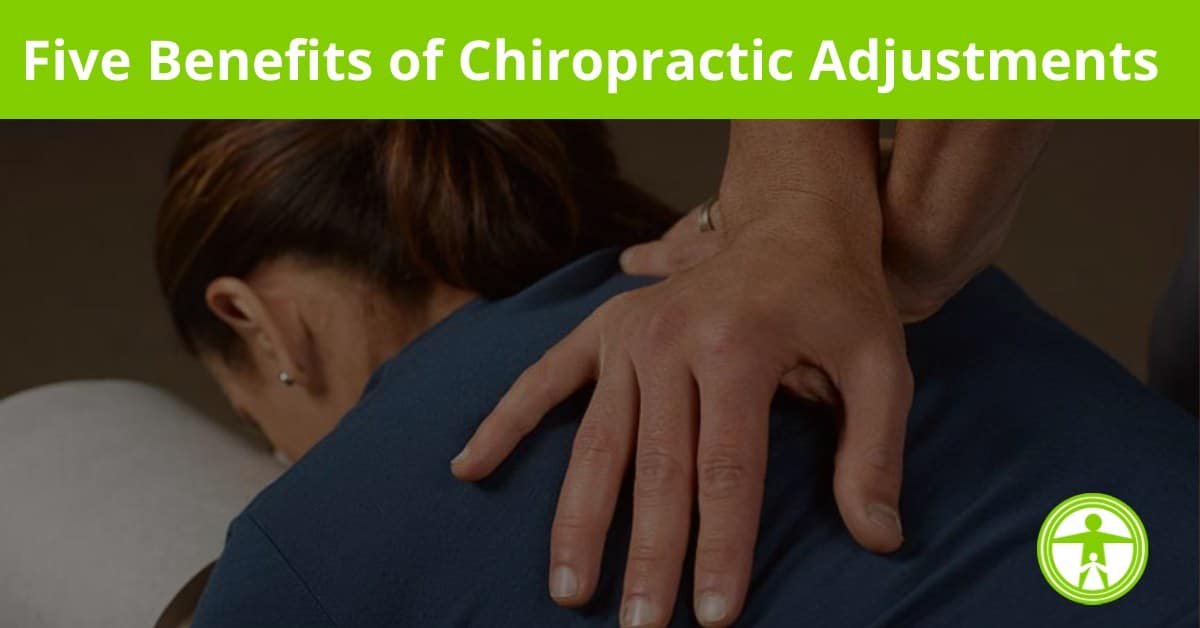Chiropractic Adjustment Benefits:
5 Reasons Why You Should Get Adjusted Regularly
Chiropractic Adjustments are small, specific forces directed to the spine to restore proper movement and function. In this article we share 5 scientific papers highlighting the significant of chiropractic adjustments.
1. The Spinal Cord Impacts Disease Processes
The work of PhD Neurophysiologist Irvin Korr involves 5 decades of his life studying the spine and its direct influence on the nervous system.
In 1976, he published a series of papers with many references pointing to the fact that an alteration in a segment or area of the spine absolutely negatively affected nervous system function.
The article was titled “The spinal cord as the organizer of disease processes” (1).
Now I know Dr. Korr was not a Chiropractor and even went on to embrace the osteopathic profession before really understanding the chiropractic philosophy and science, but his work on understanding the relationship between the spine and nervous system is profound. In fact he published so many articles in his career and had such an influence in spine and neural physiology that the eulogy in his funeral was also published in PubMed…WOW!)
Most of his work helps validate the power of a chiropractic adjustment. Korr even experienced this first hand when his health was slipping in his 40’s and he was treated by spinal manipulation.
After one treatment he went for a walk and found an irresistible urge to break into a jog, which he hadn’t done in years. From that moment he described a transformation in his life!
Korr attributes his long life (lived into his mid 90’s) and prolonged intellectual activity to having received quality traditional osteopathic and chiropractic spinal adjustive care.
Dr. Roger Sperry, a nobel prize winner on brain research, said “90% of the stimulation and nutrition to the brain is generated by movement of the spine”!!
Korr helped prove that the spine was much more than just a structure that helped us stand more erect and protected the spinal cord. He was also unique and inspiring as he always pointed out we as humans express our humanness by choosing to do such things as play the piano, ski, walk, etc.
He pointed out the importance of taking care of the “whole person” in healthcare instead of the reductionist viewpoint of picking out just a diseased organ or part like the allopathic physicians practiced.
The bottom line in the work of Korr was how he showed that a misalignment in the spine creates a stress that negatively impacts the nervous system.
This increased stress leads to overactivation of our “fight or flight” system and negatively impacts overall health physiology.

Reference: “The spinal cord as organizer of disease processes” Korr IM. J Am OsteopathAssoc. 1976 Sep;76(1):35-45.
2. Chiropractic Adjustments Positively Impact Brain Function
A study performed in 2011 revealed the impact of one single chiropractic adjustment on the brain and nervous system.
Published in “Alternative Therapies Health Medicine” (2), this study was done by 8 PhD’s and 1 Chiropractor.
They used a PET scan as a powerful neuro-imaging technique to measure neuronal activity in the brain.
They were able to take a radioactive analogue of glucose as a marker to measure brain glucose consumption as it would indicate brain metabolic activity post-adjustment.
Their findings were ASTONISHING!!
The study clearly demonstrated that the sympathetic tone of the nervous system was inhibited, salivary amylase was decreased (indicating a decrease in fight/ flight physiology), regional brain metabolic changes occurred, and muscle tone & pain intensity decreased following ONE single chiropractic adjustment.
Let me tell you what this means…
Studies dating back to the Windsor autopsies in 1921 up until now have claimed that spine strength and integrity and health impact nervous system function…
THIS STUDY PROVES IT!
But the mechanism behind this study would not indicate a hard bone impacting a nerve.
Rather, it backs the plausibility that decreased segmental movement and abnormal alignment of the spine creates abnormal signals into the brain (specifically the hypothalamus) leading to increased sympathetic tone (flight/flight).
Increased sympathetic tone always increases stress hormones (because of the direct link from spinal mechanoreceptors to lamina 7 of the spinal cord and then up to the cerebellum, thalamus, cortex, and then hypothalamus) as the spine has the ONLY direct link to the Hypothalamus (and thus hormones) in the entire body.
Taking this a step further, chronic increased stress hormones are linked through numerous studies directly to a host of diseases including but not limited to cancer, glaucoma, bi-polar disorder, type I & type II diabetes, rheumatoid arthritis, autoimmune disease, osteoarthritis, excessive body weight, hypertension, asthma, immune system function. (“Autonomic and Autocoid Pharmacology” 2009)
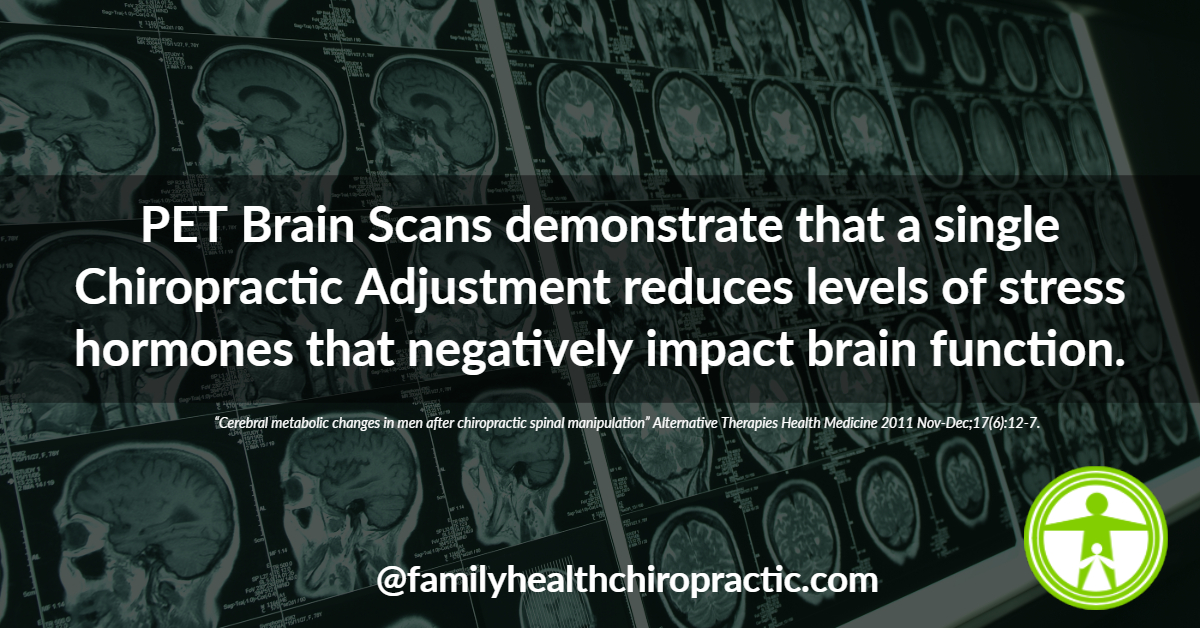
Reference: “Cerebral metabolic changes in men after chiropractic spinal manipulation” Alternative Therapies Health Medicine 2011 Nov-Dec;17(6):12-7.
3. Chiropractic Adjustments Are Good For You Regardless of Symptoms
This 3rd Study published in the “Journal of Neurophysiology”(3) showed that a cervical spinal adjustment (ON PATIENTS WITH NO PAIN) influences the cortical brain and can create neuroplastic changes in the brain tissue.
There are counselors and emotional modification programs that cannot create neuroplastic changes in the brain over months and months of therapy like one single chiropractic adjustment can.
I believe the best part of this study is that the subjects receiving adjustments DID NOT have neck pain but had confirmed misalignments. (In other words…the spine was misaligned and undergoing damage in the absence of pain)
How many people who never have pain, think about getting chiropractic adjustments? Just because you don't have pain or hurt doesn't mean your healthy.
This particular study proved that a chiropractic adjustment had a direct influence on sensory input into the brain that positively changed it.
It was noted that “enhanced active inhibition” of the sympathetic nervous system tone occurred in ALL post-adjustment measurements!
The other cool thing it proved was that it clearly wasn’t a placebo effect or just “laying on of hands”.
One group was set up for an adjustment but the high velocity low amplitude thrust was not made and this group had NO cortical neuroplastic change.
The bottom line here is that the spine misalignment leads to a bombardment to the Central Nervous System with afferent signals from joints and surrounding muscles.
A chiropractic adjustment reduces excessive signals and improves altered input into the brain and spinal cord, resulting in better adaptation to any internal or external input the brain perceives.
Truth is…
- There is no way to be healthy without a healthy spine.
- There is no way to know if you have a healthy spine unless you have it checked (regardless of pain or symptoms).
- Chiropractic Adjustments are proven to positively impact your brain and spinal cord for improved health.
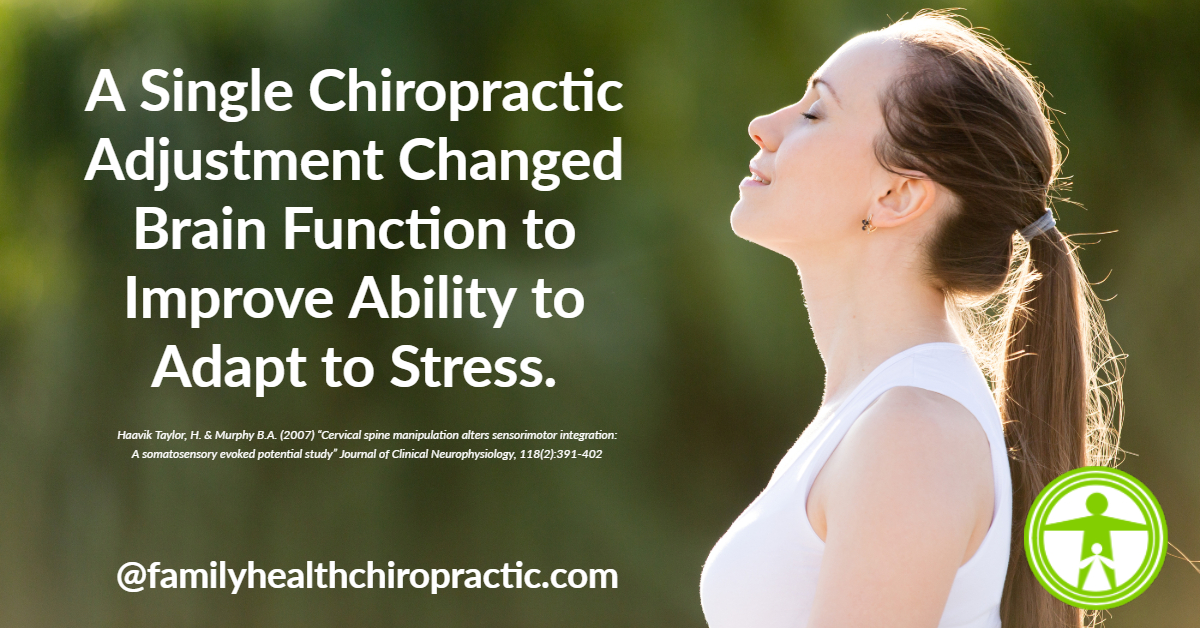
Reference: Haavik Taylor, H. & Murphy B.A. (2007) “Cervical spine manipulation alters sensorimotor integration: A somatosensory evoked potential study” Journal of Clinical Neurophysiology, 118(2):391-402
4. Chiropractic Adjustments Improve Posture
The next study I want to cover is one of my favorites.
This was a study published in the reputable Medical Journal of SPINE in 2005 and was done by a team of all Medical Doctors headed up by Dr. Steven Glassman.
They measured posture in 752 subjects from the sagittal plane (from the side) using full-spine x-rays.
They took measurements from C7 (the 7th bone in your neck) and took plumb-line measures as it relates to the sacrum.
Basically, the more forward C7 was in relation to the Sacrum, health status was decreased significantly.
ALL MEASURES OF HEALTH STATUS showed significantly POORER SCORES AS POSTURE DEVIATIONS INCREASED.
This is why we evaluate posture on every single patient!
Even minor forward head posture was shown to be detrimental to health.
From breathing and heart rate, to pain and disability, all health markers that were measured worsened as the posture deviations increased.
This again clearly demonstrates the relationship between a bad spine (spine misalignments) and its implications on human health, particularly as it relates to non-musculoskeletal physiology.
All Chiropractic adjustments help to restore posture by improving motion and spinal integrity which improves afferent input into the spinal cord and brain, thus, allowing the body to comprehend and balance itself better in relation to gravity.
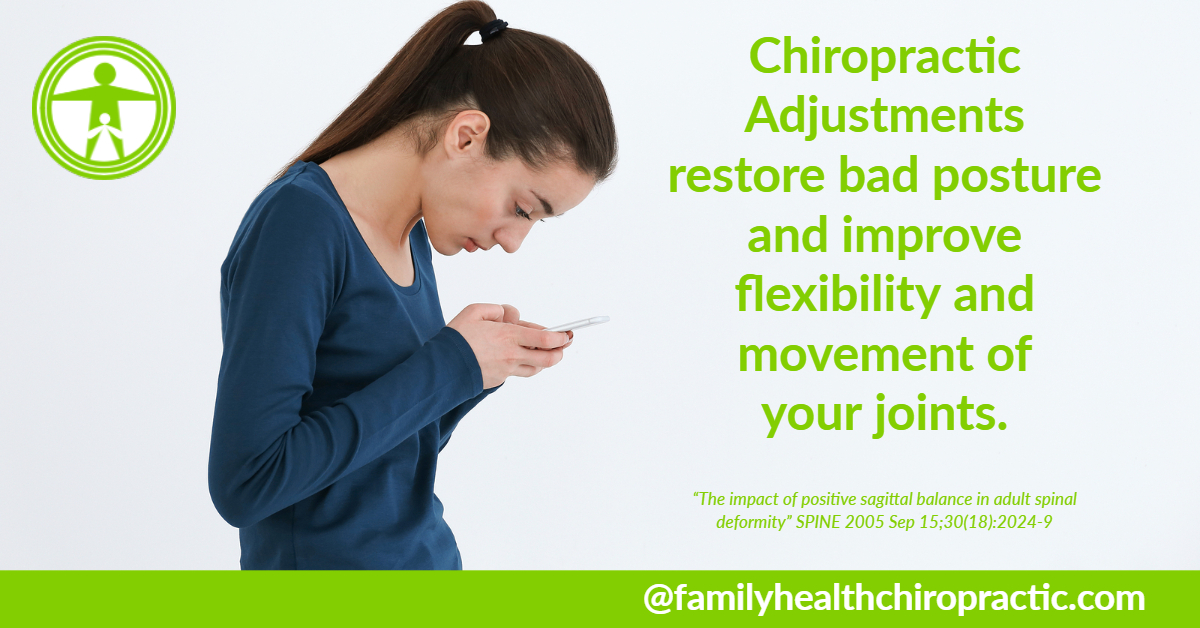
Reference: “The impact of positive sagittal balance in adult spinal deformity” SPINE 2005 Sep 15;30(18):2024-9
5. Chiropractic Adjustments Are Beneficial For Children
The 5th study you should know about the power of chiropractic adjustments involves kiddos and even newborns.
This paper comes out of the Journal of Manual Medicine and was published in June 1992 (5).
This is a critical piece to understand as it relates to why infants and children need chiropractic evaluations and care if necessary.
The study evaluated more than 600 children, all less than 2 years of age. In this research they refer to the spine misalignments as a “kinematic imbalance due to suboccipital strain” (KISS).
The report talked about the pathogenic importance of asymmetric posture in small children and the fact it is often played down – if recognized at all by the medical community.
The author noted that KISS (spine misalignments) has a wide range of clinical signs and in many cases can be dealt effectively with manual therapy.
The risk factors for why these children had KISS syndrome, as they called it, were from intrauterine misalignment, application of extraction aids in delivery, prolonged labor, and/or multiple fetuses. (In short, BIRTH itself was the Cause!)
When someone asks me if their newborn or child should get adjusted, this paper is the first thing that comes to mind.
WHY INFANTS AND KIDS NEED CHIROPRACTIC!
Lets look at the facts of the study.
First off, they agreed that the main symptoms that KISS syndrome can lead to are:
- torticollis
- unilateral face asymmetry
- C-scoliosis
- motor asymmetries
- unilateral retarded maturation of hip joints
- slowed motor development
- sleeping disorders
- neck sensitivity
- face swelling
- fever of unknown origin
- loss of appetite
- feet deformities
- pathological reflexes
- range of motion diminished by 30% or more
They concluded that on these babies “an A-P radiograph of the upper cervical spine is imperative.”
The radiograph evaluation helps to find malformations and aids in determining the direction of the adjustment.
THERE WAS NO CORRELATION BETWEEN EXTENT OF THE ASYMMETRY AND THE SYMPTOMS OR SUCCESS OF THE TREATMENT!
This means that even a small shift or misalignment is clinically relevant.
The treatment involved an “impulse adjustment” and in most cases the direction and line of drive was determined by radiological findings (85% of the time).
6 HUGE findings in this study:
- “Selection of the direction of adjustment without x-ray seems the most plausible cause of the less encouraging results of some colleagues.” This means x-rays helped get better results. Interesting, but I don't like Xray-ing babies less than 3 years of age!
- THE RISK OF TREATMENT WAS MINIMAL! No serious complications were encountered. Most children would cry for a moment but stop as soon as they are in their mother’s arms. In 2 cases (out of roughly 600) the children vomited after the adjustment but had no negative effect of outcome in either case.
- It was noted that the UPPER CERVICAL SPINE REMAINS A WEAK SPOT IN MOST CHILDREN which is why they should be re-examined before they start school at age 6.
- KISS is not confined to local complaints or even mechanical symptoms and is not taken into account when these children show signs of restlessness and concentration difficulties.
- KISS DOES NOT ALWAYS LEAD TO CLINICAL SYMPTOMS
- Upper cervical “delicate structures undergo considerable stress during delivery” and during delivery “a majority of newborns suffer from micro-trauma of the brain stem tissues in the periventricular areas.” (The CAUSE is “Normal” Births)
***Another interesting side-note from this study was that the adjustment of the occipital/cervical region led to disappearance of problems that the parents had not reported because they did not see a connection with the spine. (I CANNOT TELL YOU HOW MANY TIMES DO WE HEAR THIS IN PRACTICE?)
And these parents would regularly note that their child would eat or sleep much better since the treatment.
WHO NEEDS TO KNOW ABOUT THIS?
EVERYONE!
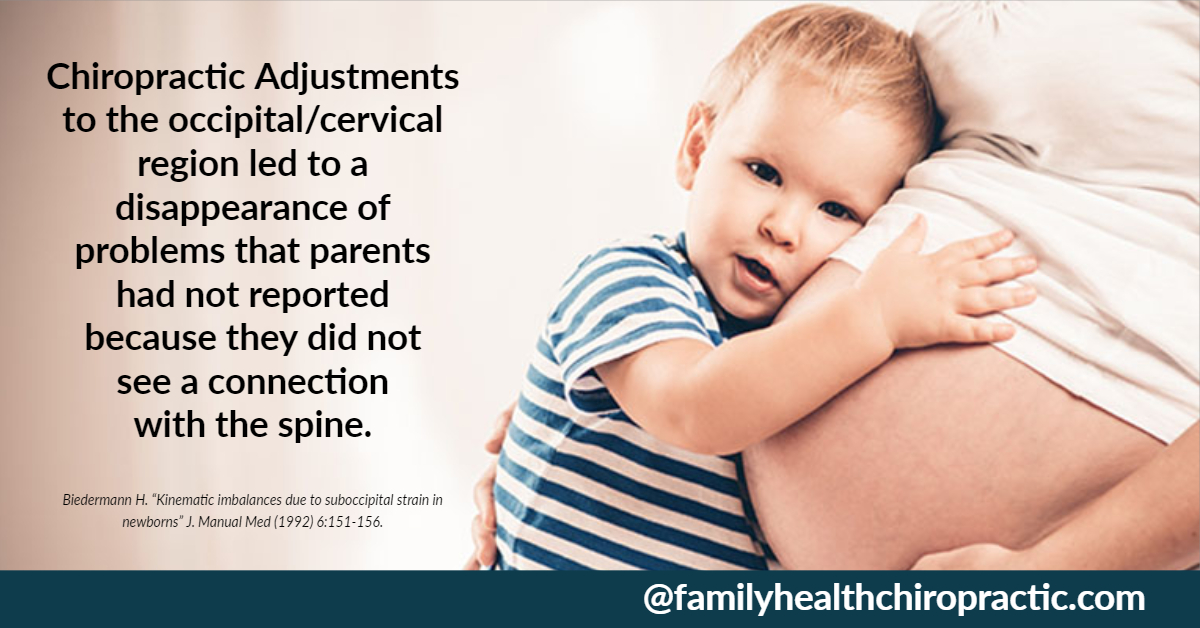
Reference: Biedermann H. “Kinematic imbalances due to suboccipital strain in newborns” J. Manual Med (1992) 6:151-156.

